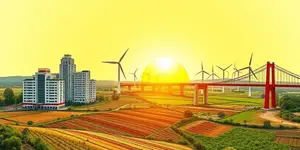
As the world’s markets become ever more interconnected, businesses of all sizes face a critical choice: remain focused on local terrain or embrace the boundless possibilities of cross-border trade. In 2025, the global landscape is shifting at an unprecedented pace, shaped by emerging economies, technological breakthroughs, and evolving geopolitical dynamics. Making the right decision now can propel your organization into a future of growth and resilience.
In 2024, global trade reached a milestone of record $33 trillion in trade, marking a 3.7% increase over the previous year. Services led the way with an impressive 9% annual rise, reflecting changing consumer preferences and digital adoption.
Looking ahead to 2025, projections suggest global trade will expand by 3.3%, led by innovations in logistics, rising consumer spending across key regions, and a wave of monetary easing by central banks. The G20 reported a 2.0% uptick in exports and a 3.1% rise in imports in the first quarter alone, underscoring the momentum that can be harnessed by agile enterprises.
As traditional markets mature, expanding middle classes and consumer demand in regions such as Southeast Asia, Africa, and Latin America are fueling rapid growth. India’s burgeoning digital economy, Vietnam’s manufacturing boom, and Nigeria’s youthful population all point to untapped potential.
To succeed, businesses must tailor their strategies to local needs, from affordable product lines to regionally optimized supply chains. Cultivating partnerships with local firms and understanding cultural nuances can turn these regions into lucrative arenas for expansion.
In today’s landscape, technology is no longer an afterthought—it is the engine of growth. Companies investing in cutting-edge technologies like AI and blockchain are streamlining operations, reducing costs, and delivering personalized customer experiences at scale.
From predictive analytics that optimize inventory levels to blockchain-powered supply chains that guarantee product authenticity, these tools can be the difference between market leadership and obsolescence. Embracing digital marketplaces and smart logistics platforms enhances speed to market and customer satisfaction.
While the upside is significant, international expansion carries inherent risks. Recent shifts in U.S. trade policy, marked by tariffs and regulatory uncertainties, have introduced volatility that can ripple through global value chains.
Geopolitical fragmentation—particularly the ongoing tensions between the U.S. and China—poses additional hurdles. Companies dependent on Chinese exports to the U.S. may see volumes decline, even as business with Europe and emerging Asia grows.
The global economy is forecast to grow by just 2.9% in 2025, the slowest pace since the COVID-19 pandemic. Higher interest rates and trade tensions have dampened investment and consumer confidence.
Inflation is expected to ease in most regions, though U.S. price pressures may remain elevated. Central banks are closely monitoring data and could cut rates if growth disappoints, offering relief for borrowers but also signaling uncertain times ahead.
Today’s consumers and investors reward companies that integrate environmental and social considerations into their core strategies. Embracing sustainability and environmental, social, governance practices can unlock new markets and foster long-term loyalty.
Whether it’s reducing carbon footprints through renewable energy adoption or sourcing responsibly to support local communities, these initiatives enhance brand reputation and mitigate regulatory risks in a world increasingly focused on climate action.
The following table summarizes critical metrics that will define international trade dynamics in 2025:
To seize the moment, companies must adopt a proactive, well-rounded strategy. Consider the following steps to transform challenges into opportunities:
The world of 2025 offers unprecedented avenues for sustainable growth for those bold enough to look beyond their borders. By combining strategic foresight, technological prowess, and a commitment to sustainability, businesses can build long-term resilience and competitive advantage.
Remember, the greatest successes often come from taking calculated risks. Don’t overlook international opportunities—embrace them, and chart a course toward a future where your company thrives on the global stage.
References













